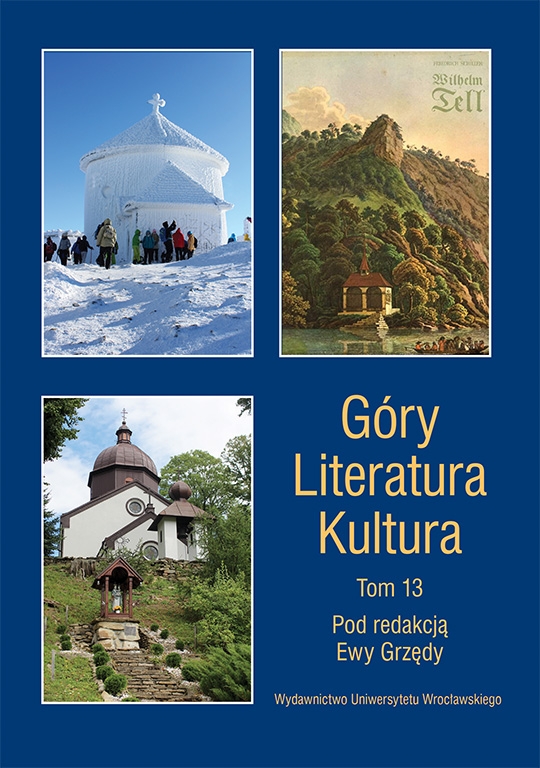

Rozprawy, studia, szkice

One of the phenomena within the cultural construct created around the mountains was from the beginning of the nineteenth century the rise of resort culture. An extremely important element of this emerging resort culture was the development of iconography (pictorial representations), which — having originated in painting and then growing thanks to the spread of graphic techniques and the industrialisation of reproduction technologies — became a mass-scale phenomenon. Tourism began to generate a demand for various types of souvenirs and pictures made with the help of various techniques and materials (illustrated publications, engravings, photographs, postcards, dioramas as well as painted or engraved pottery or glass). It also became an impulse for the production of various components of resort culture, including advertising brochures and leaflets; posters and signboards, which became an increasingly familiar part of the urban iconosphere; shop windows; newspapers and magazines with advertising inserts; and even graphic layout of restaurant menus or hotel bills; finally, small architectural forms complementing big resort ensembles.
This phenomenon should be viewed in many contexts — social transformations, especially social reception of visual messages, growth of resorts, development of medicine, technical infrastructure and many other. So far research into resorts has focused largely on an earlier period, encompassing the nineteenth century. However, the first half of the twentieth century has left a significant mark in the tourist space, and, above all, a lot of visual evidence. All this — from the oldest, eighteenth-century voyages pittoresques to twentieth-century “modern” advertisements of places, sites and events — can be used as a basis for research into pictorial culture and its analyses.
Naturally, the mountains are one of the most important elements of this iconography. They are its main protagonist, sometimes a background or backstage. They are a real element of local topography or a symbol and archetype. The phenomenon can be observed also in Silesia, in the resorts of the Giant Mountains and the Kłodzko Valley, also in Polanica, when a joint-stock company was set up to manage and expand the resort.
The article presents the components and history of increasingly professional marketing strategies pursued by the local authorities and management of the various mountain resorts in Silesia from the nineteenth century until the first half of the twentieth century. In addition, the author analyses image as a form of message as well as the power of visual information in the context of reflections on the popularisation of the mass media and information explosion, researched today within the framework of visual sociology, visual anthropology and visual culture studies.